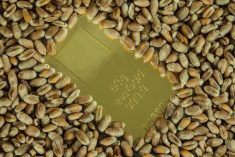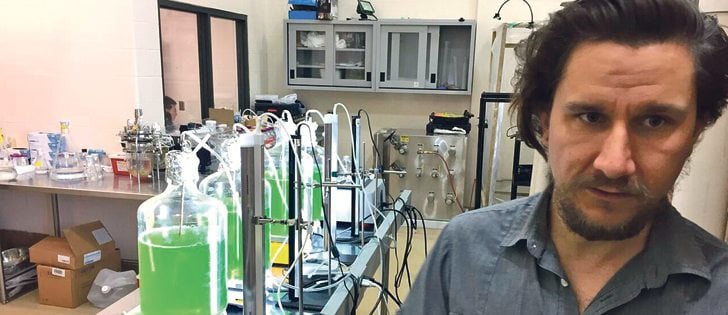A few days ago, halfway down a 12 kilometre patch of muddy bog humorously represented as a road on the map, I felt rather naked and exposed to disaster. My two-wheel drive vehicle was almost sinking up to the axles and spinning tires in each 50 metre long section of mud that appeared in the once-gravel road I’d been fool enough to take. (It was a cross-country shortcut between two highways. Should have figured something out from the “Road Closed – local traffic only” sign . . . ) A few K into this white-knuckle experience I stopped, got out on a dry bit of the road, and considered whether I should just turn back. But I doubted I’d be able to get back through a few of those mud bogs, so I decided to persevere in my course, not knowing whether the boggy bits would get bigger or smaller, but reckoning that the Devil I knew, who lay behind me, probably wouldn’t be out-eviled by the Devil in front of me.
Read Also

Budget seen as fairly solid, but worrying cracks appear
The reaction from the agriculture industry to prime minister Mark Carney’s first budget handed down November 4th has been largely positive.
Thus do we reckon ourselves into even more perilous situations.
Anyhow, somehow surviving the next few K without ending up sunk in any quarmires and having to beg a farmer to haul me out, I got to a paved highway, and headed for Arborg. There, in this Interlake, Manitoba region, I found fields in about the same state as the road that’d almost swallowed me. Pools of water everywhere. Deep, deep ruts where farmers had last fall attempted to harvest a crop. Many, many fields where the crops of last summer are lying flat, awaiting a lit match. Lots of farmers around here didn’t get a crop at all on most of their fields last year. Zero yield.
A farmer drove me down a four-quarter strip of fields – 540 acres – all seeded to oats and all unharvested. Food for the geese right now.
Which made me wonder: what would happen to a guy who had hedged his crop in spring or mid-summer 2008 by signing a forward contract that didn’t contain an act-of-God clause, or making a futures sale? Usually a farmer can count on getting at least a quarter to a half-a-crop at harvest time, so locking in prices for at least that much before it’s all in the bin seems wise and prudent to many farmers and advisors. After all, you’re going to have physical product to balance the obligation, so almost all the time it just seems like a price risk to take. If you make take a short futures position to lock in the price: the increase or decrease in the physical value of the grain is traded off against the futures position and price protection is obtained. So long as you lock in only, say, 25-35 percent of the crop (maybe more later as harvest approaches and the size of the crop becomes clearer) then you’re probably pretty safe from unexpected production shortfalls.
But up around here, many farmers got close to zero production. Nothing to cover a sales obligation or balance a short futures position. Which, in 2008, could have been the best thing that ever happened to him, hedgingwise, with a futures position. Prices crashed between mid-summer and fall, so settling that futures position would have been a pleasure, something to mitigate the despair of looking at the unharvestable crop. Depending on the nature of a forward contract sale, that could have been a fortunate proposition too.
But that would have been plain, dumb luck. Like a good speculative bet. Just a fortunate price swing that covered incredible nakedness and exposure. If prices had gone the other way, the farmer would have had not only the total loss of this crop to contend with, but also margin calls or contract obligations to fulfill or buy-out. Ouch! A compounding of disasters. Not only do you not get your own crop in, but you have to buy one for another guy.
The Interlake situation last summer is very rare and exceptional. But it might take only a couple of such rare and exceptional circumstances to ruin a farm’s finances permanently. That kind of thing has happened to many. I called a couple of risk management experts and asked how a farmer could deal with this rare situation – the danger of a total crop loss – and still use hedging tools that normally offer price protection, not absolute exposure. The answers weren’t surprising: 1) Make sure you have crop insurance, preferably that has some upside price protection; 2) Consider using options rather than futures because there’s never a margin call; 3) Try to get act-of-God clauses or some other provision that mitigates stunning reversals of fortune.
None of this is news to me or anyone in the crop producing or marketing business. But it was interesting to me, after coming face to face with a large region of cropless farmers, to see that there really are no magically wonderful solution to this situation of hedging tools breaking down and going backwards in weird circumstances. Of course everyone would like to max-out on crop insurance, if it was affordable to do so and actually paid-out when needed. But that’s not always the case. And options are nice, until you have to pay the premiums, and these days they’re extremely high. And the farmer’s in a pretty weak position to force act-of-God clauses in certain crops like oats, so his choice often is to accept contracts without one, or not sign a contract at all.
Again, none of this is news to anyone out there, but something about that terrible reality up in the Interlake made me see even more clearly the terrible, naked exposure to which farmers can be vulnerable. And I was glad that my naked vulnerability on that muddy road, caught between quagmires, overflowing ditches and terror, was a weather phenomenon that I could just drive away from.















